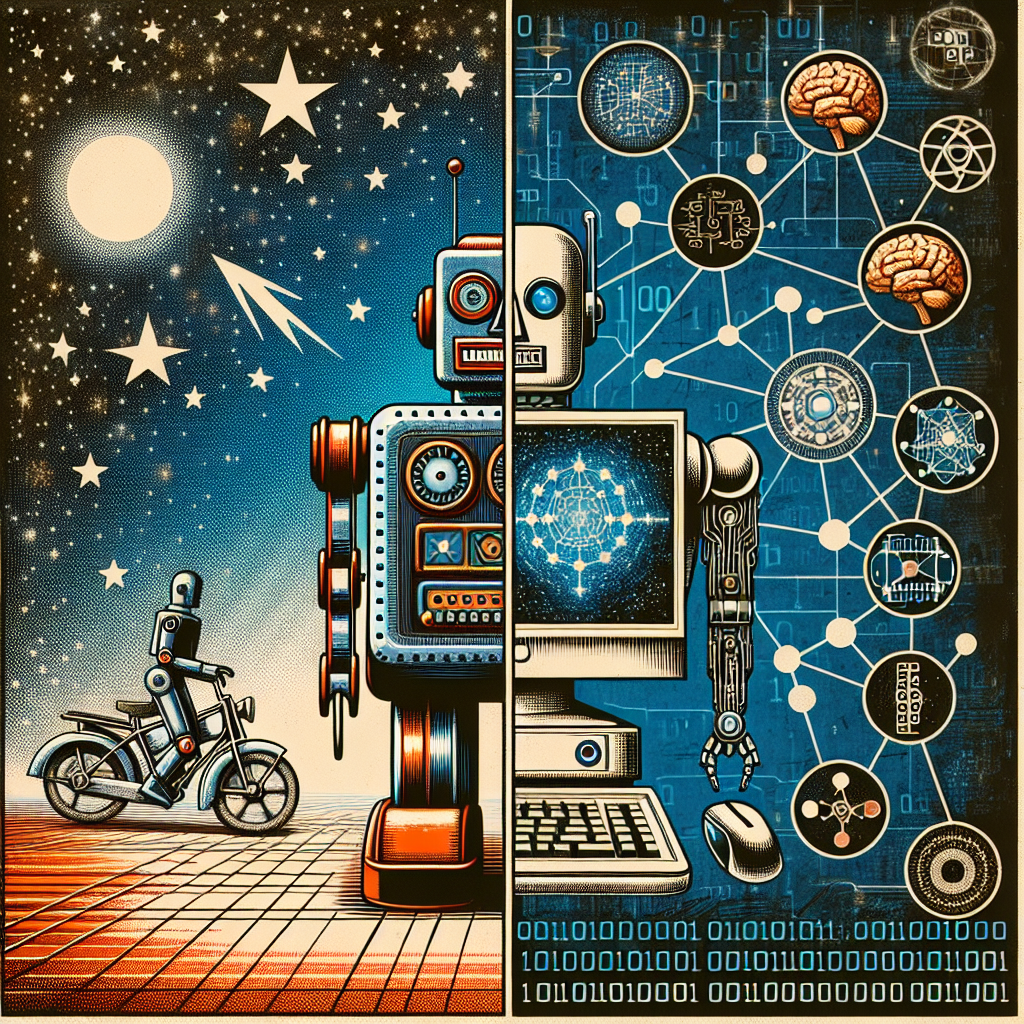From Sci-Fi to Reality: The Evolution of AGI in the Digital Age
Artificial General Intelligence (AGI) has long been a mainstay of science fiction, with depictions of sentient robots and super-intelligent computers captivating audiences for decades. But in recent years, AGI has transitioned from the realm of fantasy to a very real and rapidly evolving field of research and development. As technology continues to advance at an exponential rate, the prospect of creating machines that can think and reason like humans is becoming increasingly feasible. In this article, we will explore the evolution of AGI in the digital age, from its origins in science fiction to the cutting-edge research being conducted today.
Origins of AGI
The concept of AGI can be traced back to the early days of artificial intelligence research in the 1950s and 60s. Researchers such as Alan Turing and John McCarthy laid the groundwork for the field, exploring the possibility of creating machines that could mimic human intelligence. Early efforts focused on developing programs that could perform specific tasks, such as playing chess or solving mathematical problems. These systems, known as narrow AI, were limited in scope and could not generalize their knowledge to new situations.
It wasn’t until the 1980s that researchers began to seriously consider the idea of creating a truly intelligent machine – one that could learn, adapt, and reason in a way that was indistinguishable from human intelligence. This vision of AGI captured the imagination of scientists and futurists alike, inspiring a wave of research and speculation about the potential implications of creating such a powerful technology.
Evolution of AGI in the Digital Age
In the decades since the concept of AGI was first proposed, advances in computing power, machine learning, and neural networks have brought us closer than ever to realizing this vision. Researchers have made significant strides in developing algorithms and models that can mimic the cognitive processes of the human brain, enabling machines to learn from data, recognize patterns, and make decisions autonomously.
One of the key breakthroughs in the field of AGI has been the development of deep learning, a subfield of machine learning that uses artificial neural networks to model complex relationships in data. Deep learning algorithms have revolutionized a wide range of applications, from image and speech recognition to autonomous vehicles and natural language processing. By training neural networks on vast amounts of data, researchers have been able to achieve unprecedented levels of performance in tasks that were once thought to be beyond the reach of machines.
Another important development in the evolution of AGI has been the rise of reinforcement learning, a type of machine learning that enables agents to learn through trial and error. By rewarding the agent for making correct decisions and penalizing it for making mistakes, researchers can train AI systems to navigate complex environments and solve challenging problems. Reinforcement learning has been used to develop AI systems that can play video games, control robots, and even beat human champions at games like Go and Poker.
Despite these advancements, achieving true AGI remains a daunting challenge. While AI systems are able to excel at specific tasks, they lack the ability to generalize their knowledge to new situations or understand the subtleties of human language and behavior. Creating a machine that can truly think and reason like a human will require breakthroughs in areas such as commonsense reasoning, symbolic reasoning, and emotional intelligence.
FAQs
Q: Will AGI surpass human intelligence?
A: While the prospect of AGI surpassing human intelligence is a topic of debate among researchers and futurists, it is unlikely to happen in the near future. Creating a machine that can match or exceed the cognitive abilities of humans will require significant advancements in AI research and technology.
Q: What are the ethical implications of AGI?
A: The development of AGI raises a host of ethical questions, including concerns about job displacement, privacy, and the potential for misuse of the technology. It will be important for researchers, policymakers, and society as a whole to address these issues proactively to ensure that AGI is developed and deployed responsibly.
Q: How close are we to achieving AGI?
A: While significant progress has been made in the field of AI, true AGI remains a distant goal. Researchers are still working to overcome many technical challenges, such as developing algorithms that can reason and understand context in the way that humans do. It is difficult to predict when, or if, AGI will be achieved.
In conclusion, the evolution of AGI in the digital age represents a remarkable convergence of science fiction and reality. While the prospect of creating machines that can think and reason like humans is still a distant goal, advances in AI research and technology are bringing us closer than ever to realizing this vision. As researchers continue to push the boundaries of what is possible, the future of AGI promises to be both exciting and uncertain. Only time will tell what new breakthroughs and challenges lie ahead in the quest to create truly intelligent machines.

